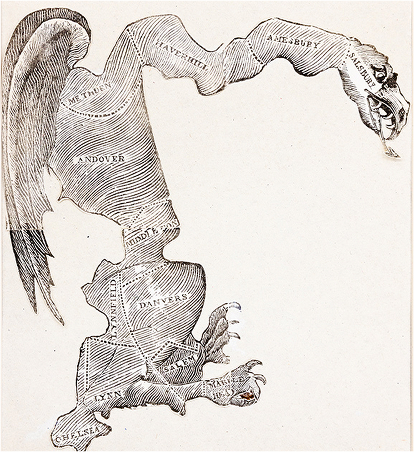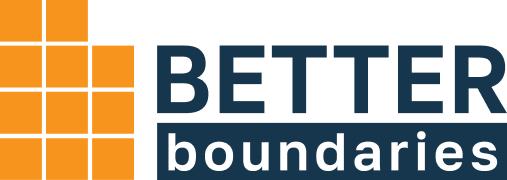Education Hub
Understanding Representation
Every ten years, Utah redraws its political boundaries to reflect population changes captured by the US Census. This redistricting process affects everything from congressional seats to local legislative districts. If done fairly, it keeps elected officials accountable. If done unfairly, it can silence entire communities.

Gerrymandering is the practice of manipulating district lines to give one group an unfair advantage. The term dates back to 1812 when Massachusetts Governor Elbridge Gerry approved a district shaped like a salamander.
Today, gerrymandering can mean packing voters from one party into a single district or spreading them thin across several ones to benefit the party in power. While the approach has changed over time, the focus often remains on prioritizing political control rather than public representation.
Before 2018, Utah’s redistricting process was overseen by the state legislature through an internal committee. This legislative redistricting committee—made up of state senators and representatives—would propose and approve new political boundaries following each decennial census. The process involved a series of public hearings but ultimately remained under direct legislative control with lawmakers drawing maps that could affect their own districts.
In 2018, voters approved Proposition 4, a ballot initiative to create an independent redistricting commission. The commission was composed of seven members: one appointed by the governor and the rest appointed by legislative leaders from both major political parties. The goal was to offer a bipartisan recommendation process with clear standards for fairness such as keeping communities together and avoiding political favoritism.
In 2020, the Utah Legislature modified the original structure with the passage of Senate Bill 200. This change made the commission advisory-only, meaning it could propose maps, but the legislature retained full authority to accept, reject, or alter them. Even so, the commission continues to gather public input and provide detailed map proposals to improve transparency and public trust. Looking ahead to 2026 and beyond, how districts will be drawn remains uncertain as the court case over Proposition 4 is still pending.
When maps are drawn fairly, voters choose their leaders—not the other way around. Fair maps lead to more competitive elections, stronger accountability, and better public policy. Unfair maps make elections feel rigged and reduce the incentive for leaders to listen to their constituents.
Some districts look strange for a reason. If a boundary stretches through several counties or slices up your neighborhood in a confusing way, it might be a gerrymander. These maps often group together people who have little in common just to gain political advantage.
To spot potential gerrymandering, you can use tools like the Princeton Gerrymandering Project or compare district shapes using public mapping platforms. In Utah, you can explore both the commission’s and the legislature’s maps side-by-side to see how different approaches affect communities:
Ballot Initiatives & Citizen Power
A ballot initiative is a process that allows citizens to propose new laws or policy changes and place them directly on the ballot for a statewide vote. In Utah, this tool gives voters a way to raise issues that may not be advancing through the legislature. To qualify for the ballot in Utah, an initiative must gather a required number of signatures from registered voters across several senate districts within a set time frame.
In recent years, Utah lawmakers have revised the initiative process by increasing signature thresholds, tightening deadlines, and requiring support across a majority of senate districts. These changes are often framed as efforts to ensure broader statewide consensus and prevent urban-heavy initiatives from dominating outcomes. Supporters argue that many voters may not fully understand the legal or financial consequences of complex initiatives, and the legislature has a duty to step in when needed. Critics, on the other hand, say the rules now make it extremely difficult for grassroots campaigns to succeed and to respond when the legislature fails to reflect the will of their constituents.
While ballot initiatives let voters directly shape policy, Utah’s Constitution allows the legislature to amend or repeal those measures after they pass. This has sparked debate, especially when lawmakers change initiatives that were passed by wide margins. Supporters of legislative oversight say it provides a necessary check to make sure new laws are workable, legally sound, and align with the broader interests of the state.
However, at the heart of this debate is Article I, Section 2 of the Utah Constitution, which states: “All political power is inherent in the people, and all free governments are founded on their authority for their equal protection and benefit, and they have the right to alter or reform their government as the public welfare may require.”
In a July 11, 2024, decision, the Utah Supreme Court affirmed that “the right to alter or reform their government” includes ballot initiatives. The Court ruled that while the legislature retains the authority to amend citizen initiatives, it cannot do so without meeting a high bar—especially when the initiative concerns structural reforms or core governance issues. This decision reinforced the principle that initiatives are a constitutionally-protected form of public participation in lawmaking.
Voting & Elections in Utah
Utah is one of the fastest-growing states in the country, and its politics reflect a mix of long-standing conservative values and emerging demographic shifts. Most statewide offices and legislative seats are currently held by Republicans, but local elections often feature a broader range of voices. Urban areas like Salt Lake City tend to vote differently than rural areas, and unaffiliated voters now make up a large portion of the electorate. Understanding this landscape helps explain voter turnout, policy priorities, and election outcomes.
Voting in Utah is simple and accessible. Most voters receive their ballot by mail and can return it by mail or drop it off in person. You can also vote early or in person on Election Day. To get started, visit vote.utah.gov. There you can register to vote, check your registration status, find ballot drop box locations, see what’s on your ballot, and learn key deadlines. Whether you’re voting by mail or in person, the site has everything you need to make your voice heard.
County clerks play a critical role in Utah elections. They manage voter registration, print and mail ballots, verify signatures, and oversee ballot counting. Each county clerk’s office ensures local elections are accurate, timely, and secure. Clerks also help answer questions from voters and certify results. Getting to know your county clerk can help you stay informed and engaged in the election process.
